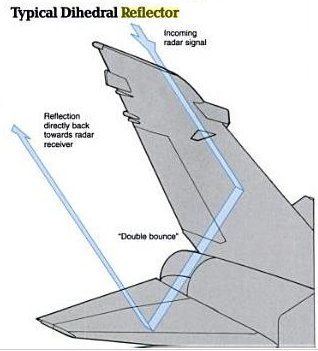- Joined
- Sep 15, 2010
- Messages
- 1,662
- Likes
- 526
I saw all the discussion between Archer and P2Prada about LPI - here's what it is ...I dont have the article to RBE2 but just remember off my head in a discussion i had with some one.
If you do google on LPI modes , you will find that they use low power T/R modules as one of the key elements for LPI capability besides the other trick.
LPI is not invincible its just that most ESM around are not tuned to detect it but the more ultra modern one can , much like most RWR wasnt tuned to detect the Ka band but the most recent one have those capability.
You cant be too sure as say it does not work , it is possible Growler is very effective against S-300 SAM.
The problem is none of the double digit SAM like S-300 , SA-11 ,SA-23 etc have been employed in combat against any NATO/US or Israel to judge its effectiveness of system in real combat , go back to the 60 and 70's , Israel faced SA-3 , SA-6 ,SA-2 from the arabs , US faced SA-2 against Vietnam , Fast forward 80's Israel faced the same SA-6 , fast forward the early 90's Gulf War , Coalition faced the same SA-2,SA-3 and SA-6 .....fast forward to late 90's NATO faced the same SA-2,SA-3,SA-6 against the Serbs and then go again to operation enduring freedom its the same SA-3 against the Iraq.
So in all 4 decades the SAM threat did not change , countries either did well like Egypt did well with SA-3/SA-6 in War of Attrition or Yom Kippur war or did very badly like in Beqqa valley or Lebanon War , similarly in Kosovo with the same system the Serbs did quite well.
Any country that could function well under pressure of war and could adapt and modify to the situation in real time did well , the others who could not adapt perished as their opponent could adapt and dominate the SAM , Like Israel did.
Nothing is useless , it would still save a day for fighter pilots , SAMS are not perfect solution neither are Jammers , The one who are regularly change their tactics and learn from mistakes and keep adapting to their environments under pressures of war will do well , will end up with less casualty and will dominate.
Its difficult to say how well IAF would fare in real war against a first rate enemy like china and how the Chinese IADS would fare against a first rate Air Force like IAF.
Agreed Air Force can just soften things for you and in the end Ground Forces will have to fight their way and dominate. The only people who exxaggarate their Air Force Capability are the Air Force themself , its a constant turf battle and you even see that in IAF.
In Kosovo conflict the Air Campaign managers mentioned that they managed to destroy 200 serb tanks etc when post war analysis was done they found that in reality only 35 tanks were destroyed.
In every Country there is a tendency to exxaggarate the Air Force capability and to under rate Ground Force contribution , there is a certain amount of charm associated with Air Force and the LGB dropping video from 30 thousand feet looks cool for PR and News
The Hard , Dirty and the Final job is still done by the ground forces.
The reason why they didnt go for Ground Campaign in Kosovo is becuause NATO countries are very sensitive to body bags and it was like fighting in Serbs own back yard , they did not want body bags and they preffered the Aerial Route.
Modern multimode radars may incorporate "low probability of intercept (LPI)" features that prevent the radar from tripping off alarm systems in a target. LPI features include:
- Generating a narrow beam that is hard to spot from off its boresight, with the sidelobes suppressed.
- Enhancing the sensitivity and noise rejection of the receiver system to reduce transmitter power requirements.
- Only transmitting radar pulses when necessary, and while tracking using only enough transmit power to maintain the track.
- Spreading the radar pulses over a wide band so there will only be a very small signal on any one subband.
- Varying transmission parameters such as pulse form, frequency, or PRF, jumping around in an unpredictable fashion, not staying in one place long enough to register.
So, LPI uses narrow beams as well as low power output ...












